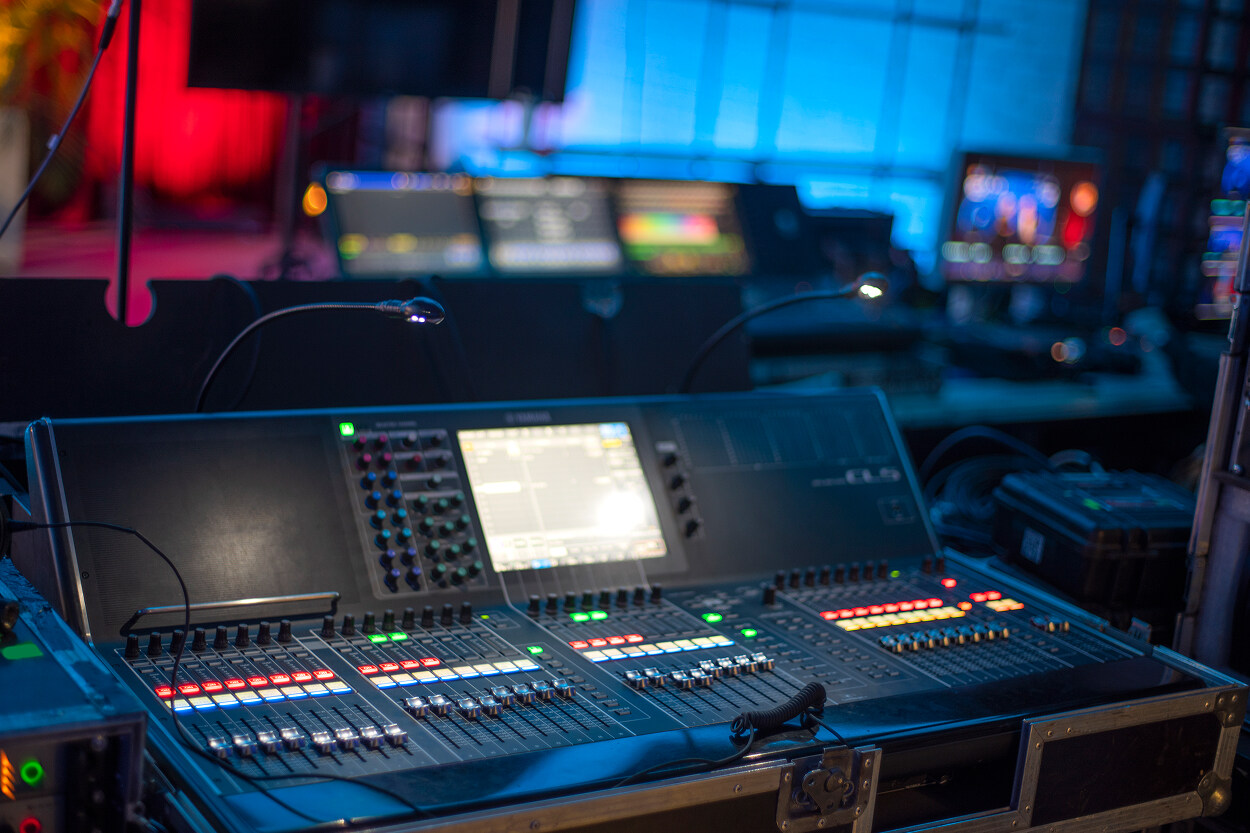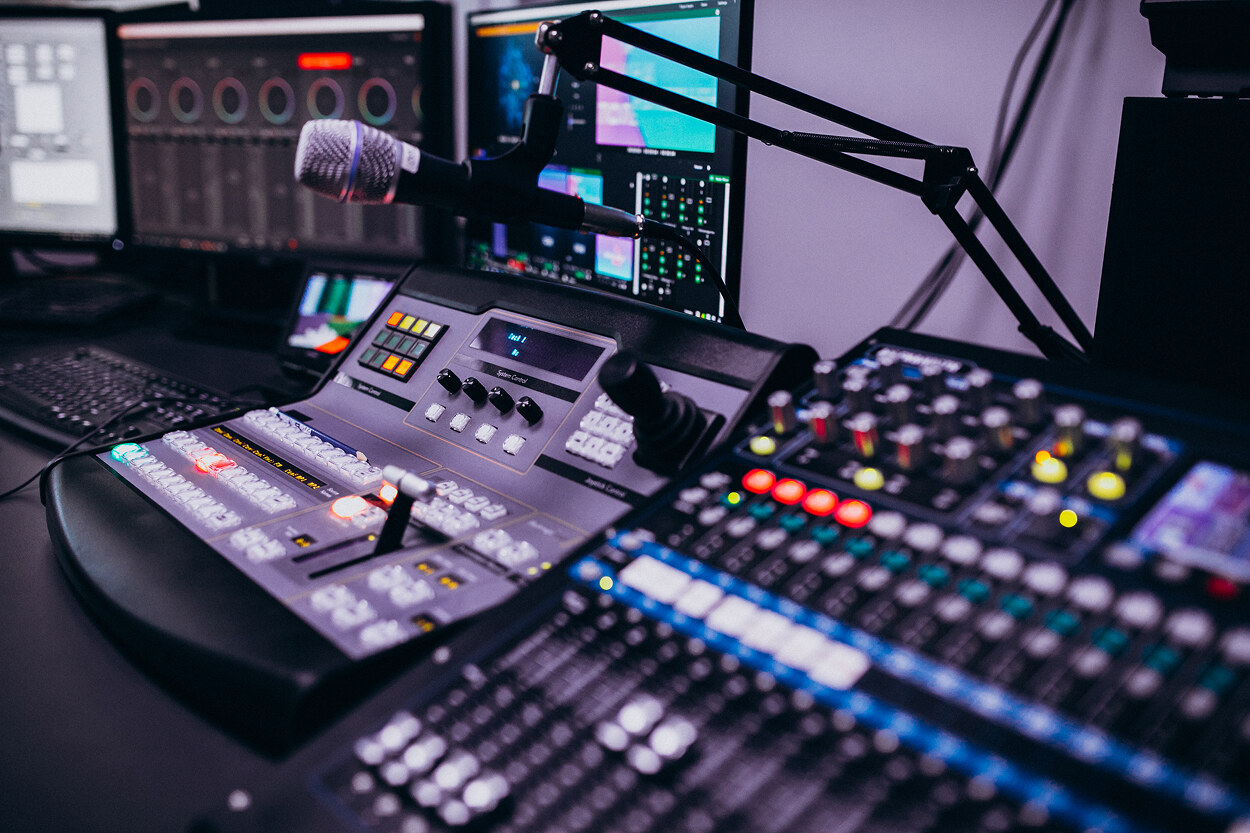AI and Video: How Neural Networks Are Transforming Broadcast and ProAV

AI is rapidly becoming the backbone of modern video processing. In both the broadcast and ProAV sectors, neural networks are revolutionizing how content is created, transmitted, and consumed. From real-time video enhancement to edge-based video analytics, AI-powered systems are setting a new standard in image quality, automation, and viewer experience.
In this article, we explore how AI technologies such as AV1 encoding, automatic correction, noise reduction, and video analytics are reshaping the video landscape. We also highlight the role of FPGA-based edge computing for real-time AI workloads.
How is AI used in video processing for broadcast and ProAV?
AI is used for a wide range of video-related tasks including:
- Real-time upscaling and noise reduction
- Scene segmentation and object tracking
- Auto-framing and background replacement
- Adaptive bitrate streaming using AI algorithms
- Predictive analytics for network optimization
These capabilities are essential in applications such as:
- Live event broadcasting
- Security and surveillance
- Smart classrooms and conferencing systems
- Stadium and venue AV systems
- OTT and VOD platforms
By automating visual tasks and optimizing resource allocation, AI allows broadcasters and AV integrators to reduce latency, improve stream quality, and scale infrastructure more efficiently.
Real-Time Enhancement with AI: Better Than Ever
Video enhancement is one of the most visible areas where AI shines. Neural networks can analyze each frame in real-time to:
- Remove noise and artifacts
- Sharpen edges and details
- Upscale to higher resolutions (HD to 4K, or 4K to 8K)
- Correct color grading and white balance
This is particularly useful in low-light or suboptimal shooting conditions, common in live environments. AI-based tools can clean up the signal without the need for post-production.
AI-Powered Compression: AV1 and Beyond
Modern video codecs such as AV1 and VVC (Versatile Video Coding) are increasingly incorporating AI to make compression smarter:
- Scene-aware encoding adjusts bitrates based on motion and complexity
- Machine learning models select optimal reference frames and quantization
- Real-time feedback loops improve compression efficiency without quality loss
AI-assisted codecs help reduce bandwidth usage and storage requirements—crucial for 4K and 8K broadcasting, as well as mobile-first OTT platforms.
Video Analytics at the Edge with FPGA
FPGAs (Field-Programmable Gate Arrays) provide low-latency, deterministic processing ideal for running AI models at the edge:
- Real-time face or license plate recognition in surveillance feeds
- Crowd monitoring and heat maps in event venues
- Player movement tracking in sports broadcasting
Unlike cloud-based AI, FPGA-based edge solutions do not suffer from latency or connectivity issues. Promwad has worked with Xilinx and Intel platforms to deploy AI models directly on video equipment, enabling real-time decision-making and reducing server loads.
Use Case: AI for Audio/Video Sync and Lip-Sync Correction
In live or multi-camera environments, desynchronization between audio and video can degrade viewer experience. AI systems can:
- Analyze lip movement and speech patterns
- Adjust audio delays dynamically
- Maintain sync across heterogeneous video sources
This use case is especially relevant in hybrid event production and video conferencing.
Video Noise Reduction Using Deep Learning
Traditional noise reduction filters often degrade sharpness or introduce motion artifacts. AI models trained on large video datasets can distinguish between noise and actual detail, preserving visual quality while eliminating unwanted distortion.
- Best for security footage, low-light recording, and archival content
- Can be deployed on embedded GPUs or FPGAs
Automatic Metadata Tagging
AI can analyze video content to automatically generate metadata such as:
- Object and face recognition tags
- Scene changes and highlights
- Language and sentiment detection in speech
This metadata is used for content indexing, targeted advertising, and smart search features in OTT platforms.
Speech Recognition and Captioning
AI-based automatic speech recognition (ASR) and natural language processing (NLP) models can:
- Generate real-time subtitles for live broadcasts
- Translate captions into multiple languages
- Provide voice-based control for AV systems
ASR is invaluable in educational, governmental, and accessibility-focused AV deployments.
Face and Emotion Detection for Audience Analytics
Audience insight tools in retail, live events, and digital signage are using AI to understand viewer engagement. Facial analysis can:
- Estimate age, gender, and attention span
- Detect emotions and reactions to specific content
- Provide aggregated analytics without storing personal data
These features enable broadcasters and advertisers to make content decisions based on real audience feedback.

Why This Matters for AV Product Developers
Manufacturers of AV equipment, smart displays, encoders, and video recorders can embed AI capabilities to offer:
- Differentiation in a saturated market
- Higher perceived value and premium features
- Lower operational costs for end-users
By integrating AI at the hardware level using FPGAs or edge SoCs, companies can create scalable, future-ready platforms.
Conclusion: The AI-Powered AV Future Is Here
AI is not just an add-on, but a fundamental shift in how video content is processed, enhanced, and delivered. From broadcast studios to smart classrooms, from stadiums to video walls, AI empowers a new generation of AV experiences.
At Promwad, we combine our expertise in FPGA, embedded systems, and video processing to help OEMs and video service providers bring AI innovations to life.
Looking to integrate AI into your AV product line? Let’s talk.
Our Case Studies








